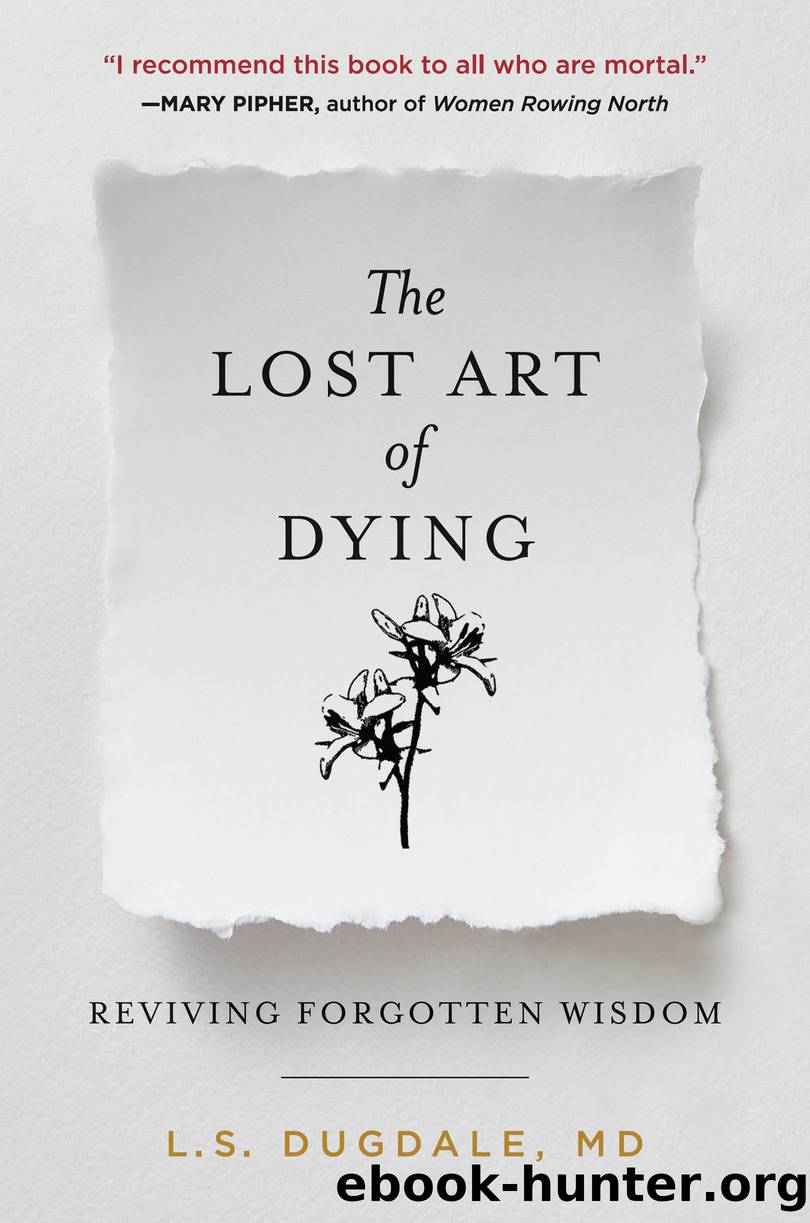The Lost Art of Dying by L.S. Dugdale

Author:L.S. Dugdale
Language: eng
Format: epub
Publisher: HarperCollins
Published: 2020-05-11T00:00:00+00:00
Whatever it may be, one thing is certain: no painter has ever gone so far in the representation of putrefaction, nor does any medical textbook contain a more frightening illustration of skin disease. This bloated body, moulded in greasy white soap mottled with blue, and mamillated with boils and carbuncles, is the hosanna of gangrene, the song of triumph of decay!
This pathetic hybrid personifies bodily suffering. Disease disfigures as it transforms.
The decay of our physical bodies, as Huysmans says, ultimately does triumph. Whether bubonic or dancing plague, heart attack or stroke, malignancy or senility, all of us experience little deaths in our bodies as we march slowly toward our corporeal end. Finitude on a small scale—the rickety knee, the bifocals—ought to stir in us a need to prepare for that final finitude.
Our journeys of bodily decline will doubtless vary. Some of us will develop cancer, undergo grueling treatments, and enter a period of remission—only to be devastated years later by its vengeful return. Others will develop slowly progressing chronic diseases, such as diabetes or heart failure. As our health deteriorates, we will experience more frequent hospital tune-ups, until that last hospitalization.
Some of us will experience health “scares”—that curable cancer or that massive heart attack from which we recover. We vow to change our unhealthy habits and to see each day as a gift. But that encounter with mortality has shaken us. Others will live to a ripe old age, succumbing to the clouded confusion of dementia or to an acute illness like pneumonia, “the old man’s friend.” Regardless, our physical bodies are forever altered by our confrontations with illness.
I care for an elderly patient who has been struggling with a chronic debilitating disease for most of his adult life. But that chronic disease is the least of his worries. What really makes him feel like a “little old man” is his arthritis. Now in his late seventies, the nagging pain keeps him from exercising, working in the garden, or playing bridge. Recently he told me that he is ready to give up.
The disfiguration caused by disease alienates us from ourselves and from our communities. For some, it feels as though the cosmos itself has cursed us and left us for dead. In the lower right corner of Grünewald’s painting, directly across from the miserable hybrid creature, a piece of parchment is tacked to a tree stump. On it are written the words Anthony purportedly uttered when finally liberated from the demons: Ubi eras, Ihesu bone, ubi eras, quare non affuisti ut sanares vulnera mea? “Where were you, O good Jesus, where were you? Why did you not come sooner to help me and heal my wounds?”
This is the same question that a Jewish woman named Martha ostensibly asked Jesus when her brother Lazarus died. According to the story from the Gospel of John, Jesus receives word that his friend Lazarus is sick and plans to travel to see him. By the time Jesus arrives, Lazarus has been dead and buried for four days, and a group of Jewish mourners has gathered at the house to console the family.
Download
This site does not store any files on its server. We only index and link to content provided by other sites. Please contact the content providers to delete copyright contents if any and email us, we'll remove relevant links or contents immediately.
| Grief & Bereavement | Hospice Care |
| Pet Loss | Suicide |
They Both Die at the End by Adam Silvera(8600)
Thirteen Reasons Why by Jay Asher(7777)
The Space Between by Michelle L. Teichman(6077)
Suicide Notes by Michael Thomas Ford(4264)
Tuesdays with Morrie by Mitch Albom(3824)
Suicide: A Study in Sociology by Emile Durkheim(2604)
The Checklist Manifesto by Atul Gawande(2198)
Tuesdays With Morrie by Mitch Albom(2165)
Robin by Dave Itzkoff(2002)
In the Woods by Tana French(1984)
Bossypants by Tina Fey(1982)
No Ashes in the Fire by Darnell L Moore(1975)
Reservoir 13 by Jon McGregor(1845)
End of Days by Sylvia Browne(1819)
Olive Kitteridge by Elizabeth Strout(1785)
Bus on Jaffa Road by Mike Kelly(1780)
All Things New by John Eldredge(1777)
Scar Tissue by Anthony Kiedis(1766)
No Time to Say Goodbye(1754)
